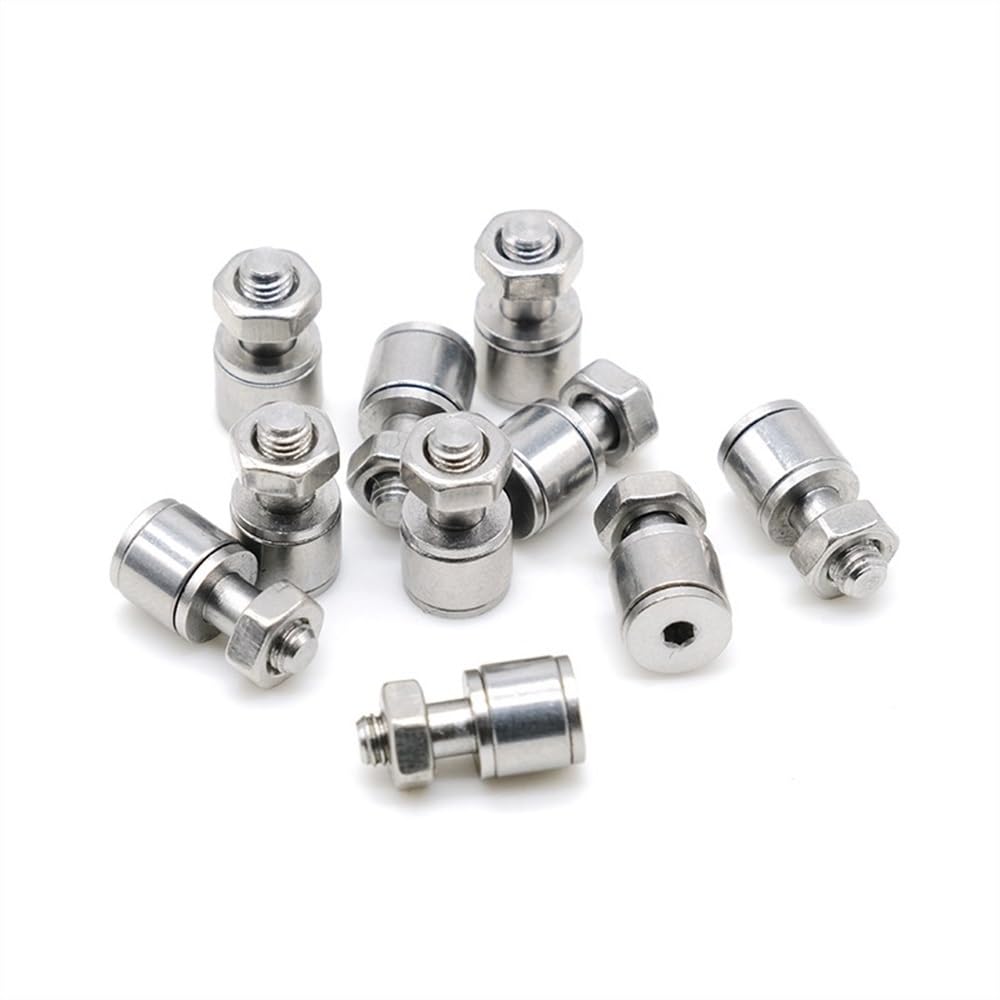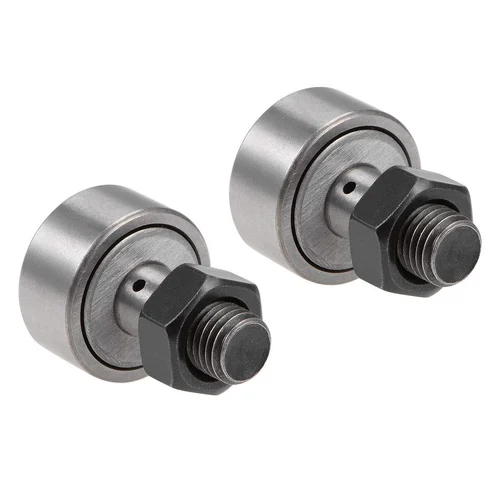How do cam follower bearings improve the functionality of conveyors and material handling systems?
Cam follower bearings play a crucial role in improving the functionality of conveyors and material handling systems. Let’s explore in detail how cam follower bearings contribute to the efficient operation of these systems:
- Precise Tracking and Guidance: Cam follower bearings provide precise tracking and guidance for conveyors and material handling systems. By following the profile of the cam, the bearings ensure that the moving components, such as rollers or belts, stay on the desired path. This precise tracking helps prevent misalignment, slippage, or jamming, ensuring smooth and reliable movement of materials along the conveyor or within the material handling system.
- Smooth and Controlled Motion: Cam follower bearings enable smooth and controlled motion of conveyors and material handling systems. They transfer the rotational motion from the driving mechanism to the connected components, such as rollers or pulleys. This controlled motion allows for gentle acceleration, deceleration, and speed regulation, minimizing shocks, vibrations, and material spillage. The smooth and controlled motion enhances the overall efficiency, throughput, and safety of the system.
- Load Support and Handling: Conveyors and material handling systems often carry significant loads, ranging from lightweight items to heavy bulk materials. Cam follower bearings are designed to provide robust load support and handling capabilities. They distribute the load evenly across the bearings, ensuring smooth and stable operation even under heavy loads. This load support feature minimizes wear and fatigue on the system components, prolonging their service life and reducing maintenance requirements.
- Flexibility and Versatility: Cam follower bearings offer flexibility and versatility in conveyor and material handling system design. Their compact size and various mounting options allow for easy integration into different configurations, including straight, curved, or inclined conveyors. The ability to accommodate misalignments and deviations in the cam profile enables customization and adaptability to specific application requirements. This flexibility facilitates the efficient layout and optimization of conveyor and material handling systems.
- Reduced Friction and Energy Consumption: Cam follower bearings incorporate rolling elements, such as rollers or needles, that reduce friction between the cam and the bearing. This rolling action minimizes energy losses and frictional heat generation, resulting in reduced power consumption and improved energy efficiency of the system. The reduced friction also contributes to the longevity of the bearings by minimizing wear and extending their operational life.
- Reliability and Maintenance: Cam follower bearings are designed for reliable and low-maintenance operation in demanding industrial environments. They are constructed with durable materials and undergo stringent quality control processes to ensure their reliability. The minimal maintenance requirements of cam follower bearings help reduce downtime and increase the overall availability of conveyors and material handling systems, improving productivity and operational efficiency.
In summary, cam follower bearings enhance the functionality of conveyors and material handling systems by providing precise tracking and guidance, enabling smooth and controlled motion, supporting and handling various loads, offering flexibility in system design, reducing friction and energy consumption, and ensuring reliability with low maintenance requirements. With these benefits, cam follower bearings contribute to the efficient and reliable operation of conveyors and material handling systems, optimizing material flow, productivity, and safety in industrial environments.
What are the signs of wear or damage in cam follower bearings, and when should they be replaced?
Cam follower bearings can exhibit signs of wear or damage over time, which may indicate the need for replacement. Let’s explore the common signs of wear or damage in these bearings and discuss when they should be replaced:
1. Increased Noise: Unusual or excessive noise during operation, such as grinding, squeaking, or rumbling sounds, can be an indication of bearing wear. If the noise becomes noticeably louder or changes in pitch, it is advisable to inspect the bearing for potential damage.
2. Abnormal Vibration: Excessive vibration or noticeable changes in vibration patterns can be a sign of bearing wear or misalignment. Excessive vibration can lead to accelerated wear and potential failure of the bearing if not addressed promptly.
3. Irregular Motion: If the cam follower bearing exhibits irregular or inconsistent motion, such as sticking, jerking, or hesitation, it may indicate wear or damage. This can affect the smooth operation of the machinery and lead to decreased efficiency or performance issues.
4. Increased Friction: If the bearing experiences higher levels of friction, it may result in increased heat generation or uneven wear. Excessive friction can lead to premature wear of the bearing surfaces and compromise the overall performance of the machinery.
5. Visible Damage: Inspect the bearing for any visible signs of damage, such as cracks, pitting, spalling, or deformation. These visual indications may suggest that the bearing has reached its operational limits and requires replacement.
6. Loss of Lubrication: Insufficient lubrication or loss of lubricant film can lead to accelerated wear and damage in cam follower bearings. If there are signs of inadequate lubrication, such as dry or discolored surfaces, it is essential to address the lubrication issue and consider replacing the bearing if necessary.
7. Excessive Play or Clearance: Excessive axial or radial play in the bearing, or an increase in the clearance between the bearing components, can indicate wear or damage. Excessive play can affect the precision of motion and compromise the overall performance of the machinery.
When to Replace Cam Follower Bearings:
The exact timing for bearing replacement depends on various factors, including the severity of wear or damage, the criticality of the application, and the manufacturer’s guidelines. However, as a general guideline, cam follower bearings should be replaced under the following circumstances:
- When any of the above-mentioned signs of wear or damage are observed.
- If the bearing is approaching or has exceeded its predicted service life based on the manufacturer’s recommendations.
- When routine inspections reveal significant wear or damage that may compromise the bearing’s performance or safety.
- During scheduled maintenance or overhaul of the machinery, as part of a proactive replacement strategy.
It is crucial to consult the manufacturer’s guidelines, maintenance manuals, or seek the advice of a qualified engineer or technician to determine the appropriate timing for cam follower bearing replacement in specific applications.
By monitoring the signs of wear or damage, and addressing them promptly, the performance, reliability, and safety of the machinery can be maintained, minimizing the risk of unexpected failures or production disruptions.
What factors should be considered when selecting a cam follower bearing for a specific application?
When selecting a cam follower bearing for a specific application, several factors need to be considered to ensure optimal performance and compatibility. The following factors play a crucial role in the selection process:
- Load Requirements:
- Operating Speed:
- Accuracy and Precision:
- Environmental Conditions:
- Mounting and Integration:
- Reliability and Maintenance:
- Cost and Availability:
One of the primary considerations is the load requirements of the application. Determine the magnitude and type of loads the cam follower bearing will experience, including radial loads, axial loads, and moment loads. Consider factors such as peak loads, dynamic loads, and the distribution of loads throughout the operating cycle. Select a cam follower bearing with a load capacity that can accommodate the anticipated loads to ensure reliable and long-lasting performance.
Consider the operating speed of the application when selecting a cam follower bearing. High-speed applications require bearings with low friction and efficient rolling capabilities to minimize heat generation and wear. Verify the maximum rotational speed and match it with the bearing’s rated speed to avoid premature failure or performance issues. Additionally, consider factors such as acceleration, deceleration, and any speed variations during the application’s operating cycle.
In applications that require precise motion control or positioning, accuracy and precision are vital. Evaluate the level of accuracy required and select a cam follower bearing with appropriate dimensional tolerances, smooth operation, and low backlash. Factors such as runout, concentricity, and straightness of the bearing components can influence the overall accuracy and precision of the application.
Assess the environmental conditions in which the cam follower bearing will operate. Consider factors such as temperature range, humidity, exposure to contaminants, and the presence of corrosive substances. Choose a bearing that is designed to withstand the specific environmental conditions to prevent premature failure or degradation. Sealing options, lubrication requirements, and corrosion-resistant materials should be considered based on the application’s environment.
Examine the mounting and integration requirements of the cam follower bearing. Consider the available space, accessibility for installation and maintenance, and the mounting configuration needed for the application. Determine whether a stud-type or yoke-type cam follower bearing is more suitable based on the mounting options and the desired support and guidance. Additionally, assess factors such as alignment, ease of adjustment, and the need for additional components or accessories to ensure proper installation and integration.
Reliability and maintenance considerations are crucial for the overall performance and cost-effectiveness of the application. Evaluate the expected service life, maintenance requirements, and the availability of replacement parts. Select a cam follower bearing with a proven track record of reliability and durability to minimize downtime and maintenance costs. Additionally, consider factors such as lubrication intervals, re-greasing requirements, and accessibility for maintenance operations.
Consider the cost and availability of the cam follower bearing. Evaluate the initial cost, long-term cost of ownership, and the availability of the bearing from reputable suppliers. It is essential to balance the desired performance and quality with the available budget and the ability to source the bearing promptly when needed.
By considering these factors, you can make an informed decision when selecting a cam follower bearing for a specific application. Taking into account load requirements, operating speed, accuracy, environmental conditions, mounting and integration needs, reliability and maintenance considerations, as well as cost and availability, will help ensure the chosen bearing meets the application’s demands and provides optimal performance and longevity.
editor by CX 2024-03-04




